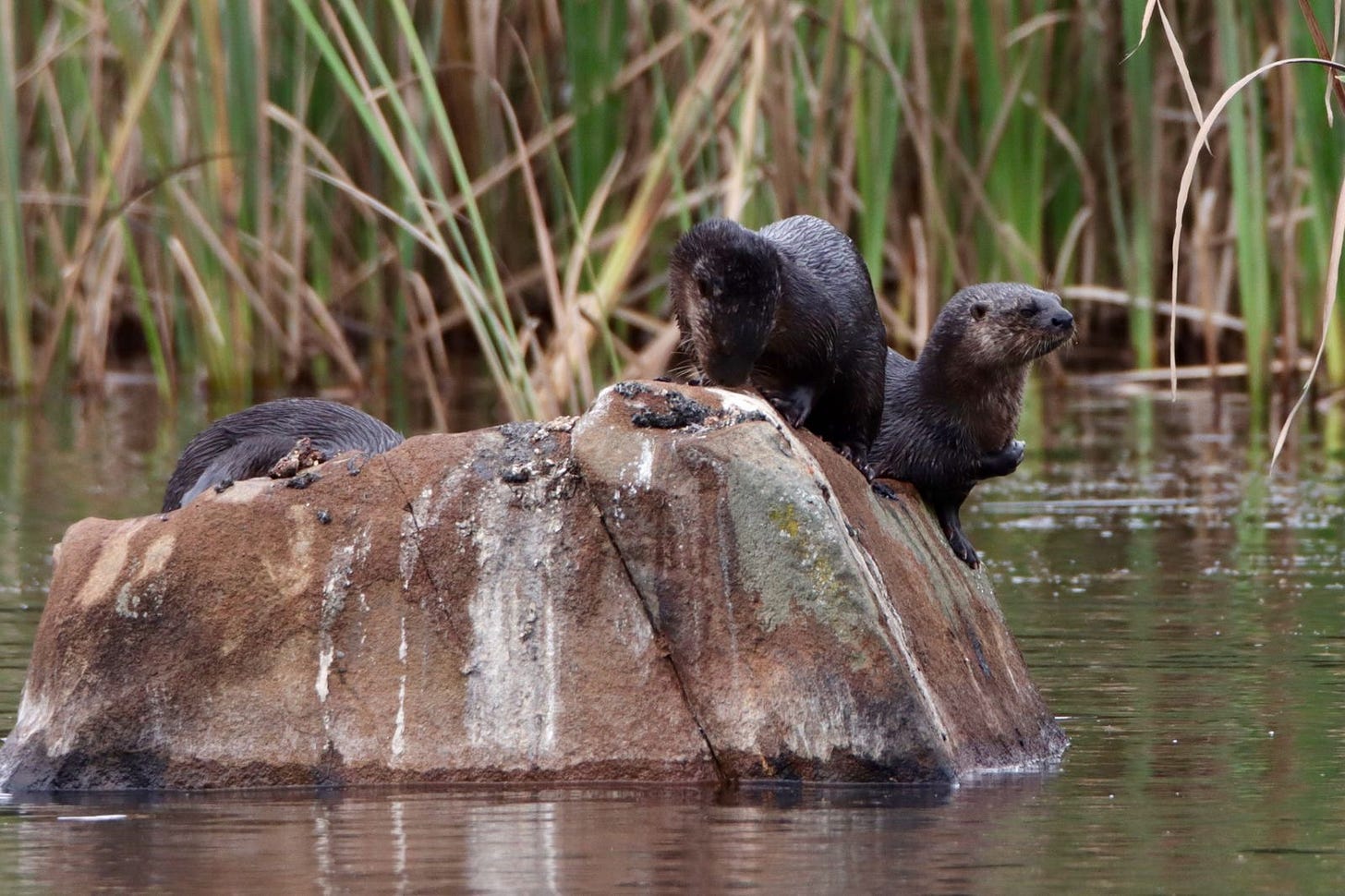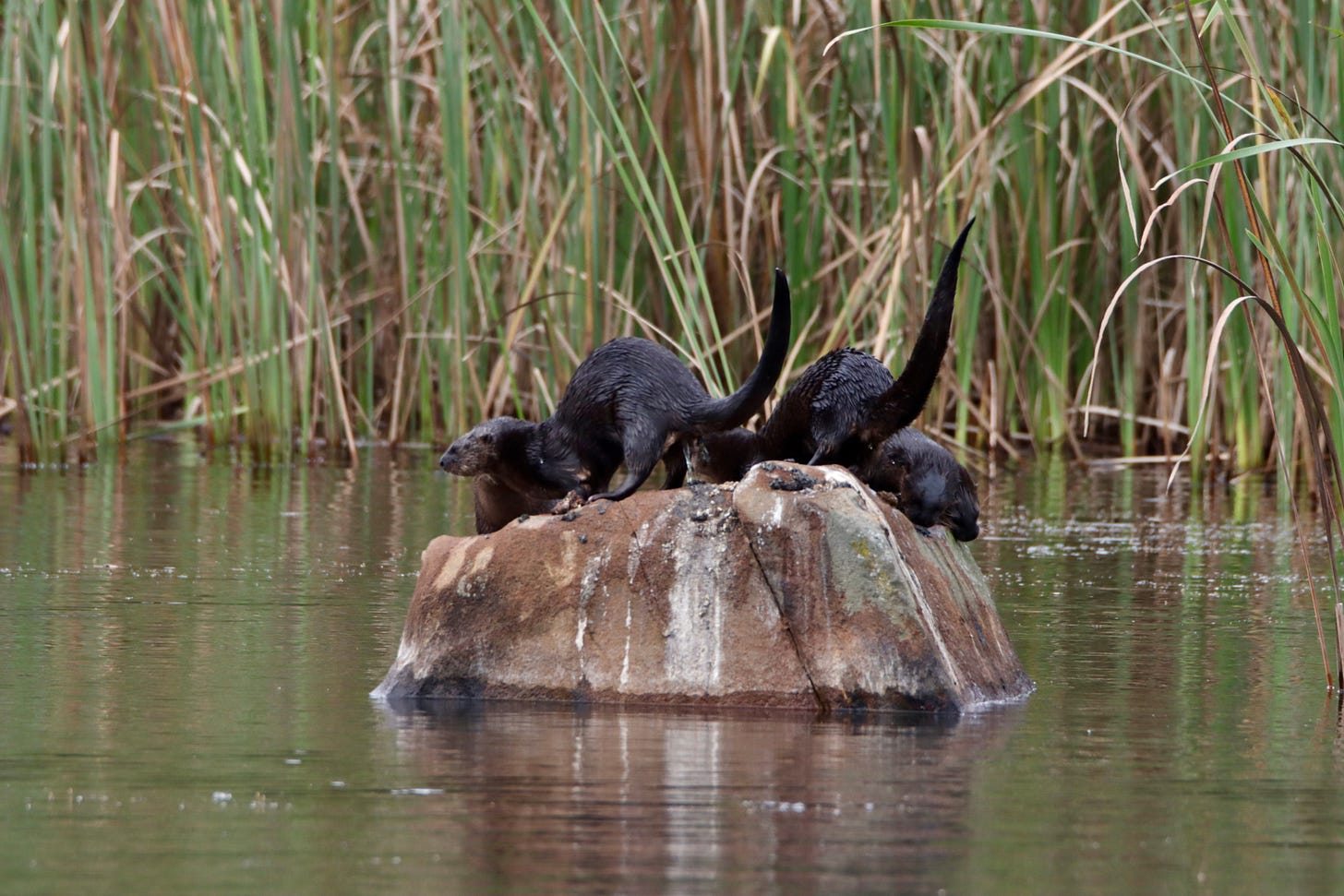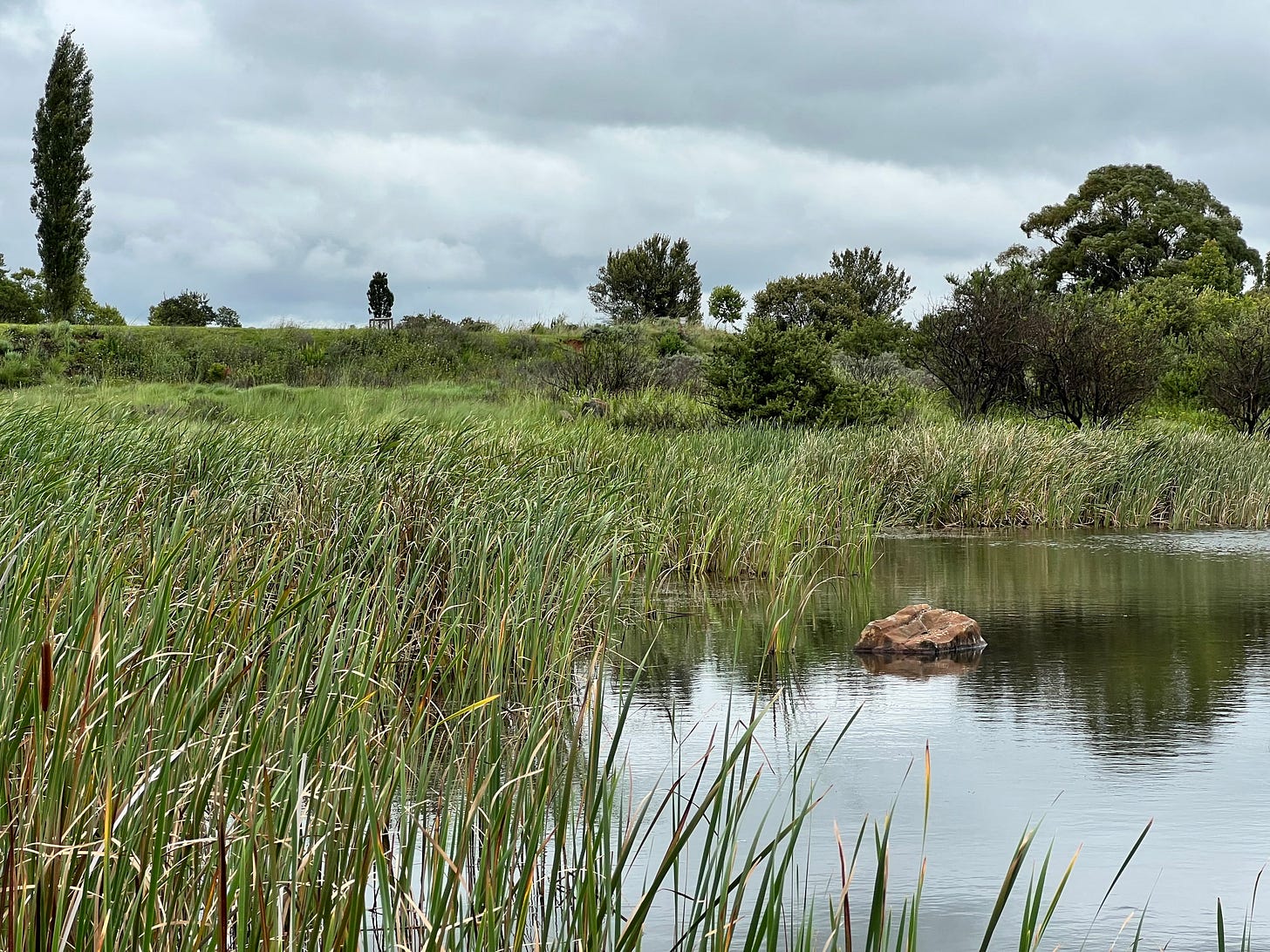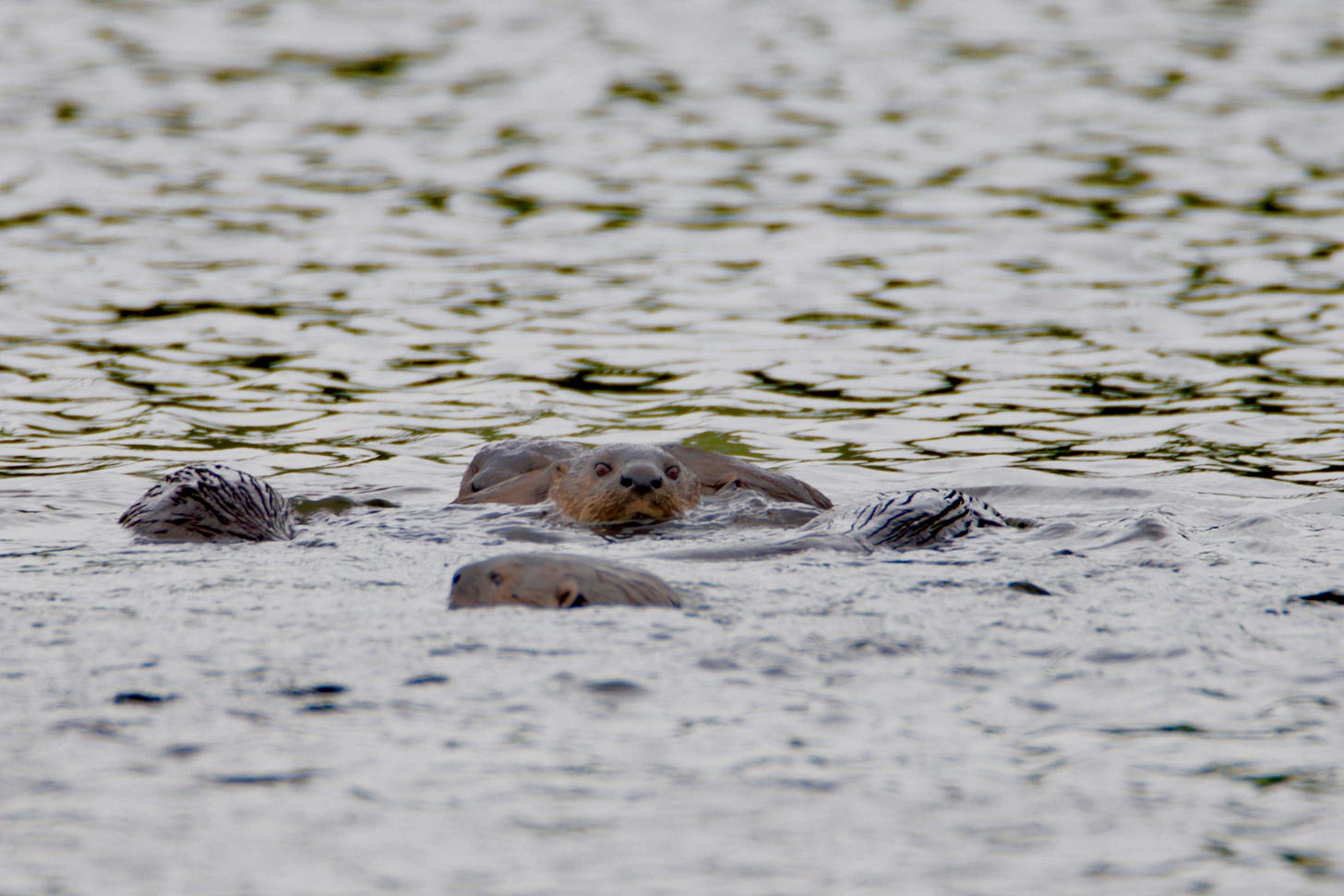AI Goes Wild: How ChatGPT Became My Nature Guide 🦦
From otter spotting to AI-assisted wildlife tracking—an adventure in observation.
When we think of AI, we usually imagine sitting behind a screen, typing away, maybe coding, or researching something abstract. But what if AI could actually pull us out of our homes or classrooms—and into the real world? What if it could heighten our connection with nature, making us notice things we’d otherwise miss?
That’s exactly what happened to me on a recent trip to Dullstroom, South Africa, where ChatGPT turned me into an otter-tracking naturalist. And let me tell you—it was pretty exhilarating. 🕵️♀️
The Unexpected Wildlife Encounter
Our family had gone on holiday to Millstream, a beautiful spot in Dullstroom known for trout fishing. My two sons love fishing. My husband, Garren1, and I? Not so much. But there we were, sitting on the bank of a fishing dam, watching the boys cast their lines.
That’s when we noticed some movement in the water. And then—oh my goodness—otters! 🦦🦦🦦 Not just one or two, but a whole group of them. First, we saw them swimming. Then they climbed up onto a rock, scampering around like tiny, playful water acrobats. And then, to our amazement, one of them stole a fish right off my son’s fishing line! 😲
David, the fishing instructor, wasn’t surprised. Apparently, these otters had learned that anglers mean easy meals. They’d perfected the art of fish thievery, tag-teaming in their group to snatch trout straight from the fishermen.
This little wildlife heist got me so curious about otters. And naturally, I turned to my trusty AI sidekick: ChatGPT.
Bringing in the AI Naturalist
I pulled out my phone and gave ChatGPT a mission:
"Act as a naturalist specializing in freshwater otters in Southern Africa. I'm in Dullstroom, South Africa, and I've just seen a group of about eight otters on a trout fishing dam. What questions would you ask to identify the species of otter I have seen?"
I love using this type of prompt structure because it does three things:
Gives ChatGPT a role (in this case, a naturalist).
Provides context (where I am, what I saw).
Asks for questions rather than just a direct answer—so I can learn how an expert would think through the identification process.
Becoming an Otter Detective 🔎
ChatGPT started by telling me that there are two species of otters in South Africa:
Cape Clawless Otter (big, stocky, prefers crabs and frogs, usually solitary)
Spotted-Necked Otter (smaller, sleeker, loves fish, highly social)
Then, it walked me through a series of questions:
Size & Build – Were they large and stocky or small and weasel-like?
Fur & Markings – Did they have light-colored spots on their throats?
Feet & Claws – Were their feet fully webbed with claws, or partially webbed with no claws?
Behavior – Were they diving and hunting in the middle of the dam, or sticking to the edges?
Social Patterns – Were they solitary, or in a large group?
Just from these questions alone, I had my answer: these were Spotted-Necked Otters! 🦦
I felt very smart because I had figured it out myself, just by answering ChatGPT’s questions. It wasn’t just feeding me information—it was guiding me to make my own discovery.
AI as a Nature-Study Partner 🌿
At this point, I was fascinated. ChatGPT had helped me unlock a whole new level of observation, and I wanted to know more. So the next day, I started digging deeper.
Garren had taken some brilliant photos, but I didn’t want to give those to my Naturalist Assistant just yet2. Instead, I simply continued the chat as if I were talking to a nature guide.
"Based on your guidelines, they were definitely Spotted-Necked Otters."
ChatGPT responded with an enthusiastic "That’s an amazing sighting!" and even suggested I upload my photos to citizen science platforms like iNaturalist and MammalMAP. It also encouraged me to:
Look for otter poop (yes, really—it’s called spraint and smells like jasmine tea at a fish market!) 🧐
Observe their habitat—what plants and other animals were nearby?
Listen for vocalizations—Spotted-Necked Otters chirp and whistle!
After being given these ideas for more detailed observation, I was off on a walk around the dam. I found a good deal of otter spraint on the dam wall (ChatGPT calls it their latrine) and I took a closer look at their rock.
And then I sat on a bench, and just… watched. I wasn’t rewarded with an otter sighting this time, but I could observe all the signs that this was their home. I felt immersed and connected to nature and honestly, I don’t think I would have sought out if it weren’t for the promptings of my AI Nature Guide.
The Wildest Insight Yet: Otter Heists 🏴☠️
Just when I thought this adventure couldn’t get more fascinating, I told ChatGPT about the otters stealing fish from the anglers. Its response?
"This is fascinating behavior and absolutely speaks to the intelligence and adaptability of Spotted-Necked Otters. Opportunistic hunting, where they exploit human activity, is a trait seen in highly intelligent animals like dolphins, crows, and primates."
It went on to explain that the otters were:
Recognizing fishing patterns and associating humans with easy food.
Using teamwork (like wolves or orcas) to steal efficiently.
Calculating risk vs. reward, waiting for the perfect moment to strike.
Basically, these otters weren’t just stealing fish—they were outsmarting us.
Try This at Home! 🏡🌳
Now, I want you to experience this kind of nature immersion. Next time you’re outdoors, whether it’s your backyard, a park, or a vacation spot, try this:
Observe – Look closely at any animal, bird, insect, or plant that catches your eye.
Describe – Make a quick note or voice memo of what you see.
Ask ChatGPT or Claude – Use this prompt (or tweak it for your situation):
"Act as a naturalist specializing in [species or environment]. I'm in [location] and just saw [description]. What questions would you ask to help identify what I saw?"
Follow the trail – Keep adding details and asking more questions.
Document it – Take notes, sketches, or even use AI to help format a nature journal entry. 📝
Coming Up Next: Using AI to Analyze Nature Photos 📸
If you enjoyed this, you’ll love my next post! I’ll be diving into how ChatGPT can help analyze the photos you take in nature—helping you identify species, behaviors, and even tracking patterns over time. So make sure you’re subscribed to Infinitely Interesting to keep getting the AI Diaries posts.
Until then, go out and let nature surprise you. And when it does, bring ChatGPT along for the ride. 🌿📷
Share The AI Diaries Series
This post is part of the AI Diaries Series, where we’re sharing ways in which you can use AI tools like ChatGPT and Claude to create a richer educational experience for your kids (and yourself!).
We’re a homeschooling family, but the ideas we share here are for anyone curious about using AI as a tool to raise lifelong learners—no matter what your educational approach. So please share this post with friends who you think would enjoy this journey.
You may remember Garren from our last post here—on using AI to play with your tone of writing.
More on using ChatGPT for nature photography analysis in the next AI Diaries post. So if you’re not subscribed already, make sure to do so—and share this post with friends who are curious about using AI for a deep and rich education.








AI as nature guide is such a good idea. It seems like it functions about as well as many of the specialized nature apps you might find and is probably easier to use. I wonder if the apps themselves will move in the direction of specially-trained LLMs because the interface is so intuitive.